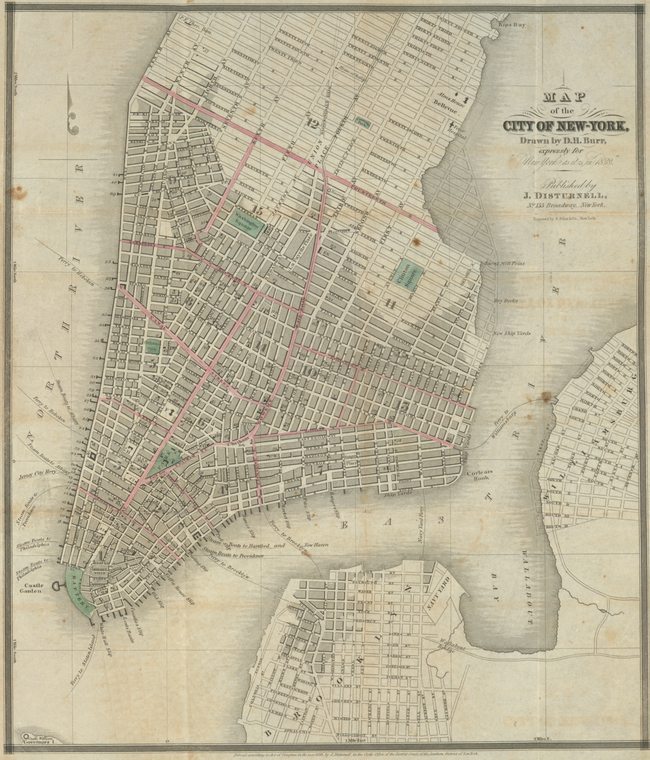NYC Neighborhoods
Between Sprawl, Slum and Hope: Urban Studies @ NYPL
The United Nations' Department of Economic and Social Affairs, Population Division estimated that by the end of 2008, for the first time in human history, the Earth's population was more than half concentrated into urban areas.
Whether we prefer it or not, the near future certainly involves city living, apartments, mass transportation, and all the other pros and cons of high density urban life. While gentrification is certainly discussed to no end in the media, less mainstream attention has focused on its counterpart, the death of suburbia.
While rising gas prices are currently not considered a worry, it may only take yet another oil crisis before we all begin speaking about a post-automobile culture. Infrastructure investments, the global economy and the science of climate change all also bear consideration in thinking about just what human life will be like in coming decades.

First, the earliest progenitors of urban studies merit special attention. Lewis Mumford's The City in History describes and hopes for "an organic city," an urban area wherein people are not so dependent on technology, and lives in accord both with innovation and nature. Canadian writer Jane Jacobs critiqued destructive urban renewal projects like Robert Moses' gutting of New York City in the 1950s in The Death and Life of American Cities. Finally, Kevin Lynch's The Image of the City remains a classic for any urbanist.
The predominant school of urban studies nowadays tends to focus a great deal on sustainability, local economies and community development. Books like Green Metropolis: Why Living Smaller, Living Closer and Driving Less are Keys to Sustainability, Sustainable Urbanism, and Green Cities: Urban Growth and the Environment highlight the ecological factors future urban planners must take into account when addressing the problems of the 21st century. While this discourse was very much in the ascendant prior to 2008, the onset of the Financial Crisis has made many (outside of Brooklyn, N.Y.) reconsider their environmental priorities in lieu of more pressing economic concerns (not to mention the considerable exhaustion of the American public from cynical corporate greenwashing).
Finally, check out the always fun and polemical Mike Davis. His examination of maquiladoras and the "mega-slums" of the Global South, Planet of Slums, is now considered highly influential in urban sociology and academia across the board. Similar to Davis, David Harvey has spawned a new scholarly emphasis on the notions of urban geography and uneven development, with his Spaces of Capital: Toward a Critical Geography. If these titles interest you, also check out Stephen Graham's Splintering Urbanism: Networked Infrastructures, Technological Mobilities and the Urban Condition.
On the opposite end of the spectrum, Robert Bruegmann offers a counterintuitive analysis of the costs and benefits of suburban and exurban growth, in Sprawl: A Compact History.

We here in New York City can at times take for granted the novelties, excesses, absurdities and philosophically cosmopolitan consequences of materially embracing urban life. For many however, a future of crowded apartment buildings, high-rises, commuter trains and ecological sustainability pose a curious and challenging affront to the logics of growth, development and incessant reliance on the automobile (if not a threat). As we go forward, studying and explaining the multidisciplinary approach of "urban studies" may allow us to converse, project, predict and possibly solve future crises before they strike.
Read E-Books with SimplyE
 With your library card, it's easier than ever to choose from more than 300,000 e-books on SimplyE, The New York Public Library's free e-reader app. Gain access to digital resources for all ages, including e-books, audiobooks, databases, and more.
With your library card, it's easier than ever to choose from more than 300,000 e-books on SimplyE, The New York Public Library's free e-reader app. Gain access to digital resources for all ages, including e-books, audiobooks, databases, and more.
If you don’t have an NYPL library card, New York State residents can apply for a digital card online or through SimplyE (available on the App Store or Google Play).
Need more help? Read our guide to using SimplyE.
